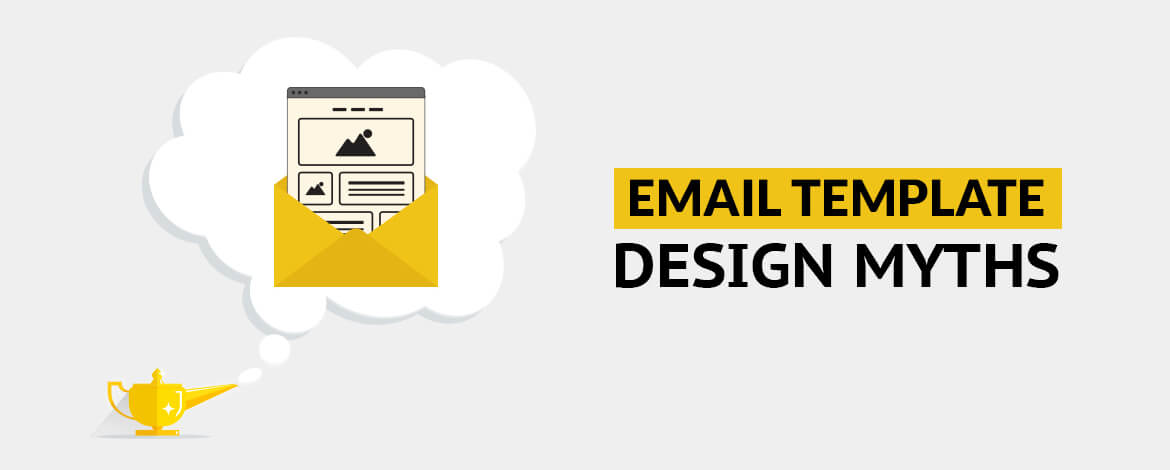Email Marketing still remains one of the most popular ways to reach a large set of audience. And a successful email marketing campaign is a result of equal roles played by in-depth conceptualization, strong copywriting and world-class design.
Have you ever been bogged down by various design and development challenges and factors while planning your email marketing campaign? Well, there are few design considerations that are wrongly followed by email designers and marketers.
Let’s take you through 7 email design myths and unravel the truth that lies behind them so that your email design process is smooth and effective.
1. Only standard system fonts should be used
Standard system fonts are the safest option to use in email template. That doesn’t mean you cannot employ non-standard web fonts. A wide range of online fonts that are licensed is available for use in emails. Google provides around 800 free web fonts; this has become the go-to library for email designers. Web fonts are supported by Apple Mail for iPhone, iPad and Mac, Google Android 4.4, OS X and Outlook 2011 and 2016. However, it depends on the email client and how the web font is embedded in the email.
2. Width of the email should be 600 pixels
When email was accessed just on the desktop, the standard width of an email was considered to be 600 pixels. But, today with more devices to cater and varying screen sizes to support, the 600 pixels rule need not be followed. Though this width can be used as a physical width to start your email design, you can make use of media queries to change the width of the email depending on the devices used by your subscribers to access emails.
3. All styles must be inline
Earlier, Gmail did not support style in the head section and hence all styles were inlined. Also, there was a misconception that Outlook also does not support styles in the header because of which majority of the developers used inline CSS to add styles. Now, Gmail has started supporting style in the header, and hence, if most of your subscribers use Gmail, Outlook, and iOS, there is no need to inline the styles in CSS anymore.
4. Emails must be identical across email clients
Email clients render emails differently. Due to this, email designers and developers create identical emails across a multitude of email clients. With new techniques in email, it does not matter much if there is a difference of a few pixels in various email clients. As a developer, you should experiment with the new techniques and find out better ways to do it.
5. Avoid using background images
Background images lack support in many versions of Outlook and some other email clients. Adding background images to an email using the complicated VML code is actually a struggle for email developers. The fact is, background images do work in emails but it depends on how they are incorporated into your email design. You shouldn’t be using background image as a key element but as a progressive enhancement like you use web fonts.
6. It is not necessary to have a responsive design
Responsive design is not considered as a necessity but, according to BizReport of BlueHornet, 80% of recipients delete emails not optimized for mobile. Also, by 2018, 8 out of 10 email users are expected to access their email accounts on mobile devices, shows The Radicati Group report. Hence, it is necessary that the emails you design run smoothly across all devices and platforms. An email that is not responsive would send your email to the recipient’s spam folder.
7. Short emails are more effective than long ones
It is a myth that people have short attention spans online and that the copy of your email must be short, concise and to the point. The fact is that email attention span is actually increasing. The key to making a mark is to provide only relevant information and not bombarding the viewers with random content. There is no standard length for an email and it all depends on the purpose of your email. You can write as much as you want to make it persuasive. A long email, too, can keep the viewers engaged.
It’s time to get over these common design myths and discover new ways and best practices to make your email marketing campaigns effective. The ideal way is to test what works for your brand. Uplers offer HTML email templates to make your email marketing campaigns effective. Explore them!
Did we miss something here? Get in touch with us and let us know in the comments below.
